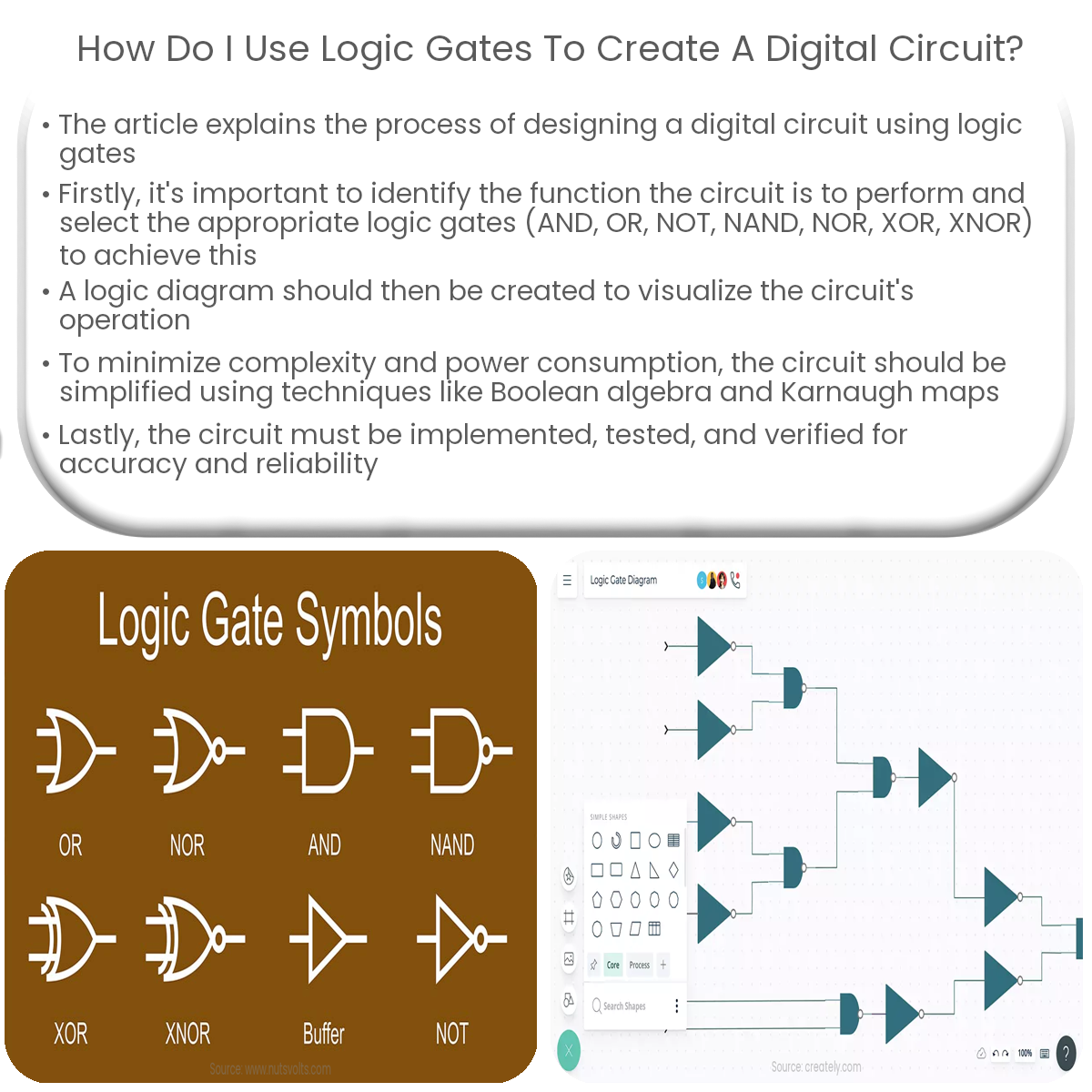To create a digital circuit with logic gates, identify the desired function, choose appropriate gates, create a logic diagram, simplify, implement, and test.
Using Logic Gates to Create a Digital Circuit
Logic gates are the fundamental building blocks of digital circuits, performing basic Boolean operations on input signals to produce an output. To create a digital circuit, you need to understand the different types of logic gates and their functions. In this article, we will discuss the process of designing a digital circuit using logic gates.
1. Identify the desired function
First, determine the function you want your digital circuit to perform. This can be anything from simple operations, like adding two binary numbers, to more complex tasks, such as implementing a specific algorithm. Clearly define the input and output requirements for your circuit.
2. Choose the appropriate logic gates
Based on the desired function, identify the logic gates needed to perform the required operations. Common logic gates include AND, OR, NOT, NAND, NOR, XOR, and XNOR. Each gate has its own unique truth table and Boolean expression, which dictate the output for a given set of inputs. Choose the gates that will help you achieve the desired output for your specific function.
3. Create a logic diagram
Develop a visual representation of your circuit by drawing a logic diagram. This diagram should show the connections between the various logic gates, as well as the input and output signals. Ensure that the diagram accurately represents the desired function and is easy to read and understand.
4. Simplify the circuit
Once you have created your initial logic diagram, look for opportunities to simplify the circuit. Techniques like Boolean algebra and Karnaugh maps can help reduce the number of gates needed and streamline the overall design. This step is crucial in minimizing the complexity, size, and power consumption of your digital circuit.
5. Implement the circuit
After simplifying your logic diagram, you can proceed to implement the circuit using hardware components, such as integrated circuits (ICs) or field-programmable gate arrays (FPGAs). Be sure to follow proper design and layout guidelines to ensure optimal performance and reliability.
6. Test and verify
Finally, test your digital circuit to ensure it performs the desired function correctly. Use simulation tools or actual hardware testing to verify the accuracy and reliability of the circuit. Make any necessary adjustments and repeat the testing process until the circuit functions as intended.
By following these steps, you can successfully design and implement a digital circuit using logic gates. Understanding the underlying principles and techniques is essential to creating efficient and reliable digital systems.


